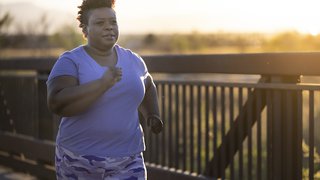
Constipation. Diarrhea. Abdominal cramps. People expect gastrointestinal disorders to manifest with unpleasant, easily recognizable symptoms. But most patients with diverticulosis, one of the most common gastrointestinal conditions, don’t even know they have it.
Diverticulosis occurs when small, bulging pouches (diverticula) form inside weak areas of the colon, with the majority of cases occurring in the sigmoid colon – the lower part of the large intestine. In the U.S., 35% of adults age 50 or younger and 58% of adults age 60 or older have diverticulosis.
People with diverticulosis might not experience symptoms or complications that require treatment. Patients can learn they have the condition when they get a colonoscopy, X-ray, or CT scan for an unrelated gastrointestinal issue.
But in fewer than 5% of patients with diverticulosis, the diverticula become inflamed or infected, causing diverticulitis – a condition that does typically cause symptoms such as:
- Pain in the lower left abdomen
- Fever
- Nausea and vomiting
- Diarrhea
- Lack of appetite
Many people who experience these symptoms delay seeking care because they’re embarrassed, or they fear that gastrointestinal surgery with a colostomy bag will be their only treatment option. However, most patients with diverticulitis can manage their symptoms with antibiotics and lifestyle changes. By learning how we diagnose and treat this disease, you can feel more comfortable asking for help sooner.
Diagnosing diverticular diseases
An abdominal CT scan is the best way to diagnose diverticulitis, as it shows the severity of the inflammation and helps us determine the right treatment plan. Severe or untreated diverticulitis can result in life-threatening complications, such as a(n):
- Abscess: a painful, pus-filled fluid collection
- Fistula: an abnormal tunnel that forms between the colon and another organ/muscle, such as the bladder or vagina
- Perforation: a tear in the colon that allows its contents to leak into the abdomen
- Stricture: a narrowing of the colon created by scar tissue that can prevent stool from exiting the colon, possibly leading to obstruction or perforation
If you haven’t had a colonoscopy within a year of experiencing symptoms, we’ll order one for eight weeks from the day your symptoms began in order to rule out the possibility of colorectal cancer, among other issues. While the risk of cancer is low, it’s 40 times higher in patients with uncomplicated diverticulitis than in the general population. It is important to time the colonoscopy for eight weeks after symptoms to reduce the swelling of the bowel, therefore reducing the risk of bowel perforation during the procedure.
Related reading: Colonoscopy and alternative screenings for colon cancer just got easier
While the cause of diverticular diseases is unknown, several studies have associated the conditions with low fiber intake, excessive alcohol use, anti-inflammatory medications, steroids, obesity, lack of exercise, and smoking.
One disproved theory is that eating nuts, seeds, and popcorn increases your chances of developing diverticulitis. The reality is these foods can actually decrease your chances of a diverticulitis flare-up by softening your stool, which puts less pressure on your colon.
Treatment options for uncomplicated diverticulitis
Antibiotics
If you are among the 80% of people with mild symptoms (uncomplicated diverticulitis), your treatment plan likely will focus on short-term symptom relief and creating a long-term plan to prevent flare-ups. Your provider might prescribe a few days of rest and possibly 10 days of oral antibiotics, such as Ciprofloxacin or Flagyl (metronidazole), to help reduce inflammation.
Lifestyle changes

To help prevent recurring flare-ups, which happen in one-third of patients with uncomplicated diverticulitis, we recommend:
- A high-fiber diet rich in foods such as bran, whole-wheat pasta, apples, pears, raspberries, beans, sweet potatoes, avocados, and vegetables
- Regular cardiovascular activity
- Weight loss, if appropriate
Increase your fiber intake slowly to reduce gas and bloating and be sure to drink plenty of water – at least 64 ounces a day. Fiber without 64 ounces of water per day will constipate you. Patients who need to limit their water intake can instead take fiber supplements such as sugar-free fiber gummies. Otherwise, we find the powder form of Metamucil (two spoons of powder in a glass of water daily) is the most helpful.
Second or severe flare-ups
Patients typically start feeling better within weeks. A second flare-up can occur, but the timing is different for every patient. If suspicion of a recurrent diverticulitis flare-up is present, we’ll confirm diverticulitis with a CT scan before prescribing the above recommendations.
If your flare-up presents severe symptoms, you might need to stay in the hospital to get IV fluids and antibiotics. Your care team will likely recommend a clear, liquid diet for several days before slowly reintroducing bland foods.
Surgery for recurring and complicated diverticulitis
For some patients, colorectal surgery is the most appropriate treatment to significantly reduce diverticulitis flare-ups. You may need surgery if your:
- Recurrences continue despite antibiotics or lifestyle changes
- Symptoms are severe, including formation of a fistula, an abscess, or a perforation
- Bowel is obstructed
You have about five feet of colon, and most patients can live a normal, healthy life without the sigmoid section, which is about one foot long. Sigmoidectomy, sometimes called a sigmoid or bowel resection, is a minimally invasive procedure to remove the sigmoid colon and make a new connection between the intestines on each side of it – called anastomosis. This surgery is almost always laparoscopic, which uses several tiny abdominal incisions, rather than open surgery, which uses a comparatively large single incision that cuts through the abdominal muscle and wall. In rare cases, laparoscopic surgery would be converted to an open surgery. This might be due to something unsafe found during the operation, such as dense scar tissue or adhesions.
A sigmoidectomy ends recurring flare-ups for more than 95% of patients. If another flare-up occurs, we can treat it with antibiotics such as Augmentin or a combination approach of Ciprofloxacin and Flagyl.
What to expect during sigmoidectomy recovery

No colostomy bag after colorectal cancer surgery
Advanced imaging and improved surgical techniques allow us to detect cancers of the colon and intestine early and remove them with precision, eliminating the need for a colostomy bag 80% to 90% of the time.
Many patients worry that they’ll need a colostomy bag after a sigmoidectomy. However, less than 1% of patients require a bag, which collects fecal matter if the intestines leak after surgery (anastomotic leak) or if the colon cannot be reconnected safely during surgery. In these cases, most patients receive a temporary bag that can be removed within three to six months. Your surgeon will discuss these risks with you prior to surgery.
Following surgery, you’ll stay in the hospital for a few days until you:
- Can pass gas regularly
- Can defecate and urinate by yourself
- Show no signs of infection, such as a fever or warmth, redness, pus-like discharge, or tenderness in your abdominal incisions
- Can walk independently with little to no discomfort (or at baseline before surgery)
After you go home, you may have diarrhea on and off during the first month. It takes about three months for the bowels to learn their “new normal.” You’ll need to avoid heavy lifting for six to eight weeks to prevent a hernia. Within two weeks after surgery, you’ll visit your surgeon or advanced practice provider to discuss your progress and determine when you can go back to work and other normal activities. It is case by case, but the average time off work is six to eight weeks.
Gastrointestinal symptoms can be difficult or uncomfortable to discuss, but that’s what we’re here for! There’s nothing we haven’t seen or heard. And the sooner you seek treatment when experiencing diverticulitis symptoms, the sooner we can help you start feeling better.
To visit with a diverticulitis expert, call 214-645-8300 or request an appointment online.












